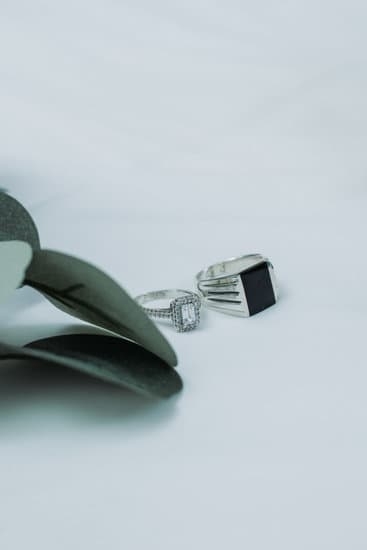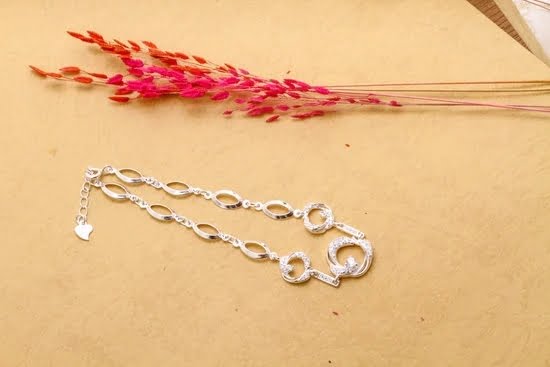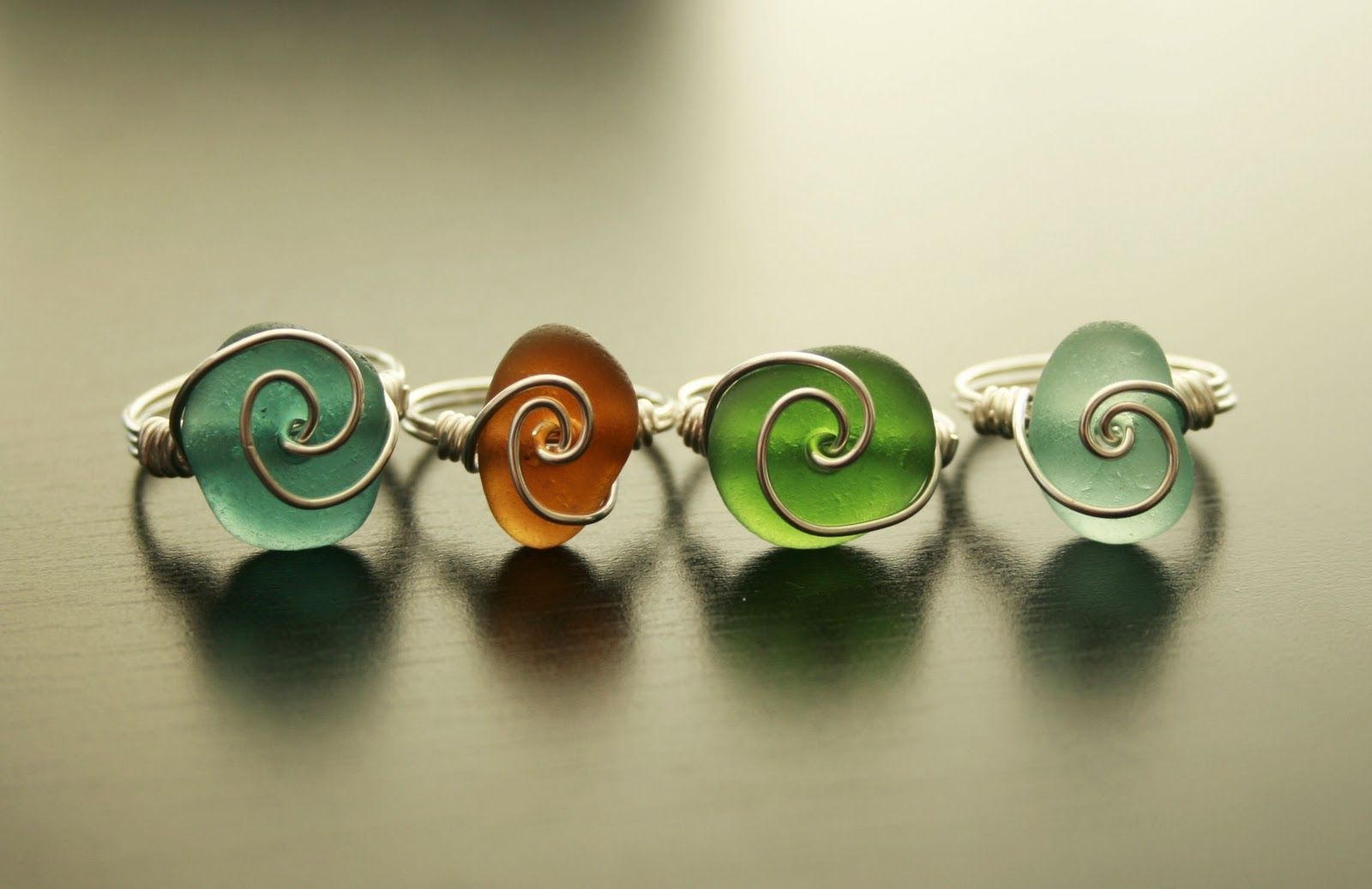Gemstone beads have a longstanding history of being used in jewelry making. Originating from various parts of the world, gemstones are considered to be some of the most magnificent and valuable types of beads used in jewelry making. Although gemstone beads can be used for other crafts such as weaving, knitting or macramé, they are predominantly known for use in jewelry making.
Gemstones differ from conventional bead materials like plastic, glass and metal because they are derived naturally. Each stone is unique and comes with its own nuances; meaning two identical stones will still be different with individual characteristics intrinsic to it alone. Gemstones radiate a unique aura that can make any piece of jewelry more captivating mainly due to the physical properties specific to each wide variety of stones available.
Gemstone bead jewelry making has been around for centuries and continues to evolve with time incorporating new techniques and trends inspired by imagination and passion. Many styles incorporate traditional techniques such as stringing onto elastic cord or wire, while modernists devise sophisticated routines involving intricate knotting and weaving which results in stunning pieces adorning even the most exquisite outfits imaginable.
The term ‘gem’ is usually associated with something that sparkles – leading people to believe all gemstones must have a glossy finish however this isn’t always the case, as uncut varieties may still possess stunning features whilst maintaining their raw and natural signature look.
To ensure longevity when creating with gemstones it’s important to select only quality material that offers durability against everyday use or wear-and-tear on a piece below standard might mean admiring glances but won’t create a long standing masterpiece crafted to outlast any trend.
Different Types of Gemstones and Their Uses in Jewelry Making
Gemstones have always been essential components of jewelry making. Their beauty and color add color, sparkle, and elegance to necklaces, earrings, bracelets, and more. The varieties of gemstones used in jewelry making are seemingly endless. Each type has different uses that add interest and distinctive elements to the design of a piece of jewelry while also conveying specific meanings in certain cultures.
From uncut turquoise to meticulously cut diamonds and faceted crystals, the selection is vast. One type of gemstone that is highly sought after for its beauty and symbolism is pearls. Often found in cream or white colors, these precious gems represent purity and innocence throughout many cultures. They can be used as focal points for earrings or included with other multicolored gemstones to create a stunning necklace or bracelet.
Another popular type of gemstone is opal, a translucent grayish stone with colorful fire-like veins that reflect when worn against light sources. It has been used in many pendants and rings as a statement element due to its uniqueness and breathtaking colors. Opal also has numerous metaphysical properties attributable to it such as heightened visions of creativity due to the movement its rainbow-colored reflections bring out when light hits it at various angles.
Then there are precious stones such as rubies, sapphires, emeralds etc., all of which feature distinct colors that bring additional depth and richness to any piece they are applied on. These gems are often sought after in higher carat weights because they lend more brilliance when light strikes them due to their natural refractive abilities compared to other gemstones.
Emeralds have widely been known for hundreds of years as symbols of true love while ruby jewelry typically represents permanence, strength, courage etc., depending on the culture from where it originated from
All together these diverse types of gemstones come together forming beautiful works of art that adorn our bodies for years beyond their inception dates – reminding us centuries later about their history and meanings associated throughout the ages.
Essential Tools and Supplies
Making jewelry with gemstone beads is a great way to create beautiful, unique pieces that make wonderful gifts or can be sold to expand a jewelry business. It’s important to have the right tools and supplies so that gemstone beads jewelry making is done in the most efficient way possible. A checklist of all necessary items should include:
Jewelry wire cutters: These professional-grade jewelry wire cutters are essential for any project that involves cutting wire. Wire cutters should be finished with sharp blades and comfortable handles so they can snip through a variety of materials like copper, brass, stainless steel and more without tugging on the material or causing it to break apart.
Round nose pliers: These pliers help make loops and coils into the wires for various forms of jewelry design. They are ideal for winding thicker gauge wire because the surface area is larger, allowing even pressure and nice shapes to be achieved easily using this tool.
Chain nose pliers: Chain nose pliers are able to work with thinner gauges of metal because of its thin jaws. They also feature flat inner surfaces which help make precision bends where needed when gemstone beads jewelry making projects require it. Besides providing extra control over bending, these pliers can also be used as flat needle-nose pliers when working on delicate components such as headpins.
Bead board: This felt-covered foam board not only helps keep track of small components such as spacers or other findings but it’s also vital when creating patterns or layouts since it allows you to arrange out your elements before stringing them together onto the wire or stringing material being used. The board helps secure fragile beads while they’re being worked on too – just place them into designated compartments or holes, preventing them from rolling away.
A bead board makes perhaps one of the greatest additions when doing any form of gemstone beads jewelry making.
Choosing the Right Gemstone
Gemstones are a popular addition to jewelry making due to their beauty, deep colors and interesting shapes. Choosing the right gemstone for a piece of jewelry requires careful consideration as each of the characteristics: cut, color, clarity, and size help bring out the unique qualities of each gemstone.
The cut of the gemstone is important as it helps create a uniform surface along with angles and proportions that help reflect the light that reaches its surface. The best cuts showcase both shape and brilliance while avoiding too much depth or shallow surfaces that can lead to poor reflection. Thus, when selecting a particular stone one should look at how evenly and seamlessly it has been cut into its particular shape.
Color is another important characteristic as it defines much of the overall beauty of a stone. The hue and tone will determine how attractive it appears in different light settings and when mixed with other stones if used in multiple pieces.
Clarity is also important as it defines how free from other minerals or features a particular stone is and how freely light passes through it thus determining what facets will be visible when set in certain backdrops such as silver or gold frames.
Finally, size is important as some stones require large carats to fully showcase their intricate setting whereas smaller ones like rubys or diamonds may look better off-set in smaller jewelry due to their delicate coloration being able to stand out against a more delicate background. When choosing your stones, focus on these four main characteristics: cut, color clarity and size; which when combined will form an eye-catching piece of jewelry like no other.
Techniques Used in Gemstone Beads Jewelry Making
Jewelry making with gemstone beads is an incredibly fun and versatile hobby that allows for endless creativity. To get started, you’ll need a few basic supplies: various sizes of beading wire, quality craft scissors, and assorted jewelry-making tools like needle-nose or flat nose pliers. In terms of beads, of course you’ll need some gemstones in different shapes and sizes, as well as glass beads and seed beads to match.
One easy way to start creating with gemstone beads is the knotted necklace, which is a timeless classic when it comes to jewelry making. Start by measuring out 20 inches of beading wire onto your work surface and cut it off with the scissors. Then begin stringing your gemstone beads, alternating between various sizes/colors/shapes until you are satisfied with your design (note: larger gemstones can also be used in combination with smaller ones).
Once all the beads have been added to the string, tie three knots using the beading wire at intervals between each bead to secure them in place. Finally thread the opposite ends of the bead wire through a large clasp – this will ensure that your design holds together without coming apart too easily.
Once you’ve created a few pieces based on simple designs, however, don’t be afraid to experiment. Try connecting multiple strands of beaded links or dangles onto an earring hook or bracelet hook; or consider weaving two or more strands into intricate patterns such as macramé knots or Celtic knots.
Different arrangements can provide interesting visual effects when combined in certain ways – so feel free to explore your options and come up with new ideas. Lastly remember: when it comes to making jewelry with gemstone beads there’s no right or wrong way – so have fun and make something unique.
Caring for Your Gemstone Jewelry Pieces
When it comes to caring for your pieces of gemstone jewelry, the most important thing is to ensure they are cleaned and stored with care. Before cleaning any of your pieces, make sure you know what type of material it is made out of and how it should be cared for accordingly.
Some types of materials might require a different approach than others when it comes to cleaning or storing them. When in doubt, always refer to the instructions given with the product or ask a professional jeweler for advice.
When cleaning your pieces, remember that there are many different types of gems used in jewelry making and each one is unique. For example, some gems are softer than others and may not hold up well when exposed to certain chemicals or extreme temperatures during the cleaning process. Always wear gloves when handling your gemstones as oils from your skin can wear away at their outer layers overtime if left unchecked.
It’s important to also note that each type of gemstone has a specific need for electrical energy and water; some saturation is needed, while too much could damage them significantly. Because of this, make sure you never use running water on your gems under any circumstance and never soak them with other items in a solution such as soapy water.
A mild detergent or solution specifically meant for cleaning gemstones is the best way to keep them clean while avoiding potential damage or discoloration due to incorrect techniques or methods being used on them over time. Finally, always store your gems either flat between two pieces of cloth inside a zip lock baggie or in an airtight container when not wearing it as contact with direct sunlight or UV lights can also cause discoloration overtime.
Tips and Tricks for Gemstone Beads Jewelry Making
Making jewelry is an incredibly rewarding craft. It is filled with excitement and possibility as gemstones of unique shapes and sizes inspire creativity. If you are a jewelry maker who has been making the same designs for some time, why not shake things up and incorporate gemstone beads into your pieces? With the right tips and tricks, you can take even basic designs to a whole new level.
One helpful tip is to consider the shapes of your beads. As gemstone beads can come in all kinds of shapes, it’s important to make sure that you factor this into your design from the beginning.
If your piece will have multiple types of gemstones, carefully evaluate how their shapes will work together and create symmetry within the piece. Another great tip involves organization when utilizing more than one size or shape in the same design; separating each type of bead onto its own plate for easy identification makes stringing them much simpler.
Finally, one final trick to ensure success with gemstone bead designs involves adding extra stability using wire threaders. For any dangling charms or charms attached directly to stone beads on an earring or necklace, running a threader beneath them ensures they won’t move around too much during wear or transport, but be careful – assessing the flexibility of a design before adding them is important so don’t ‘over restrain’ pieces so they remain comfortable to wear.
Completing pieces through these more secure methods makes certain that every item created is longer lasting and visually pleasing, no matter what type of gems are incorporated. By following these tips and tricks for incorporating gemstone beads into jewelry making endeavors, makers can boost their skills while creating jaw-dropping pieces.
Where to Find Resources and Inspiration
Gemstone bead jewelry making is a popular art and craft among many, with an abundance of materials, colors, shapes, and sizes, the choices for creating earrings, necklaces, and bracelets are almost limitless. Aspiring craftspeople all over the world use these decorative beads to create unique pieces of jewelry that are both aesthetically pleasing and meaningful.
Starting out in gemstone bead jewelry making can be overwhelming as there’s a lot to learn; however this doesn’t have to be daunting if you have access to some great resources.
One excellent resource available is professional beading communities such as Beading Forum or the Bead Society. These are forums and online galleries where members across the spectrum of jewelers-from beginners to experts-discuss tips and tricks during their (virtual) meetings. By visiting one of these sites, you can get inspiration on what kind of design ideas would work for your next project.
Additionally, many of these forums provide instructions on how to source quality materials or how to create wire-wrapped loops and other level-appropriate know-hows that would otherwise take a lot longer to learn. They also often feature showcase areas dedicated to displaying beautiful pieces made by fellow jewelers for further inspiration.
Finally, there are plenty of online resources offering step-by-step tutorials for gemstone bead jewelry making projects with practical advice from experienced artisans helping newcomers get started with confidence. Sharing photos from completed projects is encouraged so that equipment preferences or style choices can be seen in order to help becoming an accomplished designer even faster.
Websites such as Pinterest also offer additional helpful discussion boards related to concept ideas that range from simple adjustable macrame bracelets up through complex artisanwork examples fit for budding professionals.

Welcome to my jewelry blog! My name is Sarah and I am the owner of this blog.
I love making jewelry and sharing my creations with others.
So whether you’re someone who loves wearing jewelry yourself or simply enjoys learning about it, be sure to check out my blog for insightful posts on everything related to this exciting topic!





